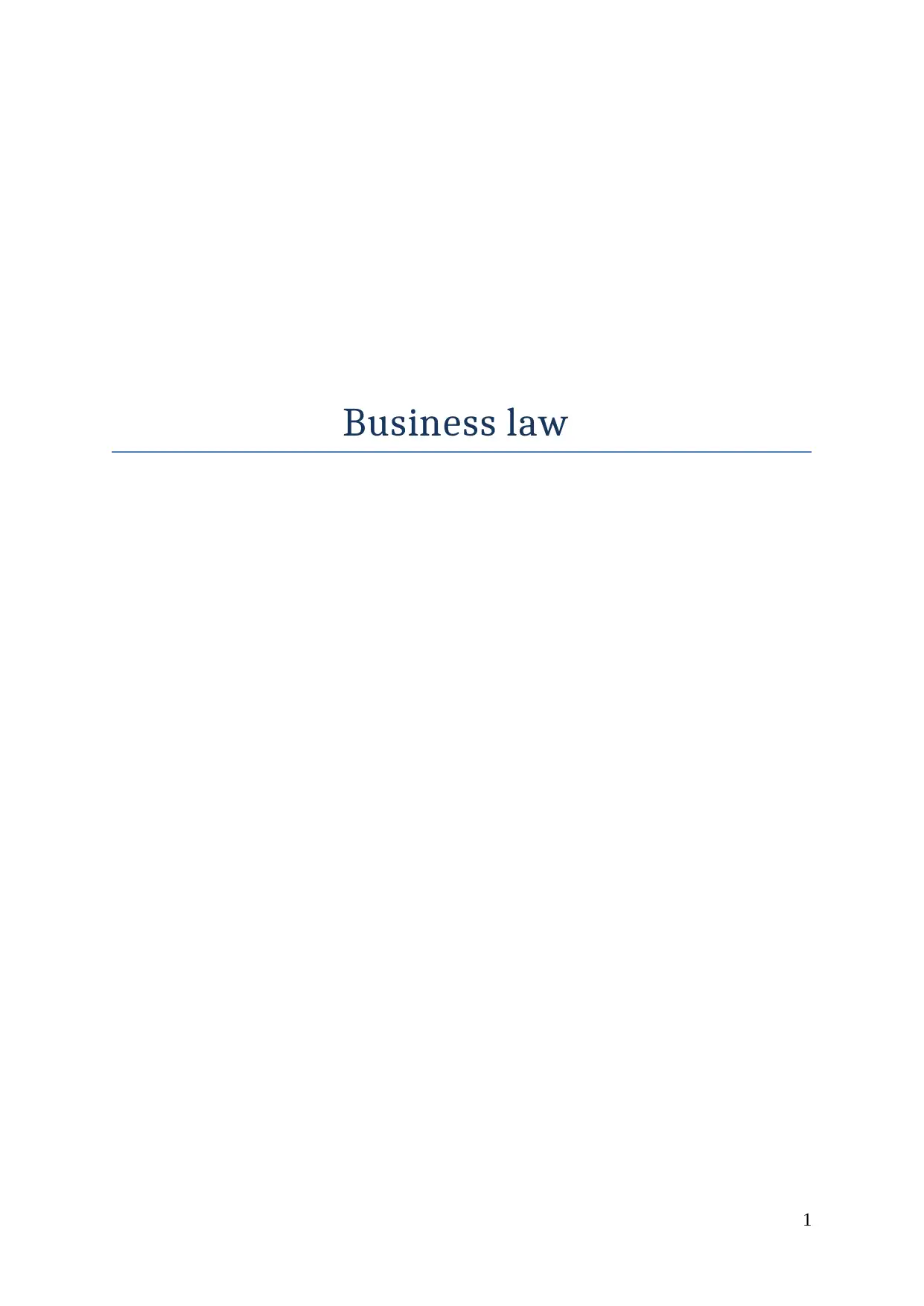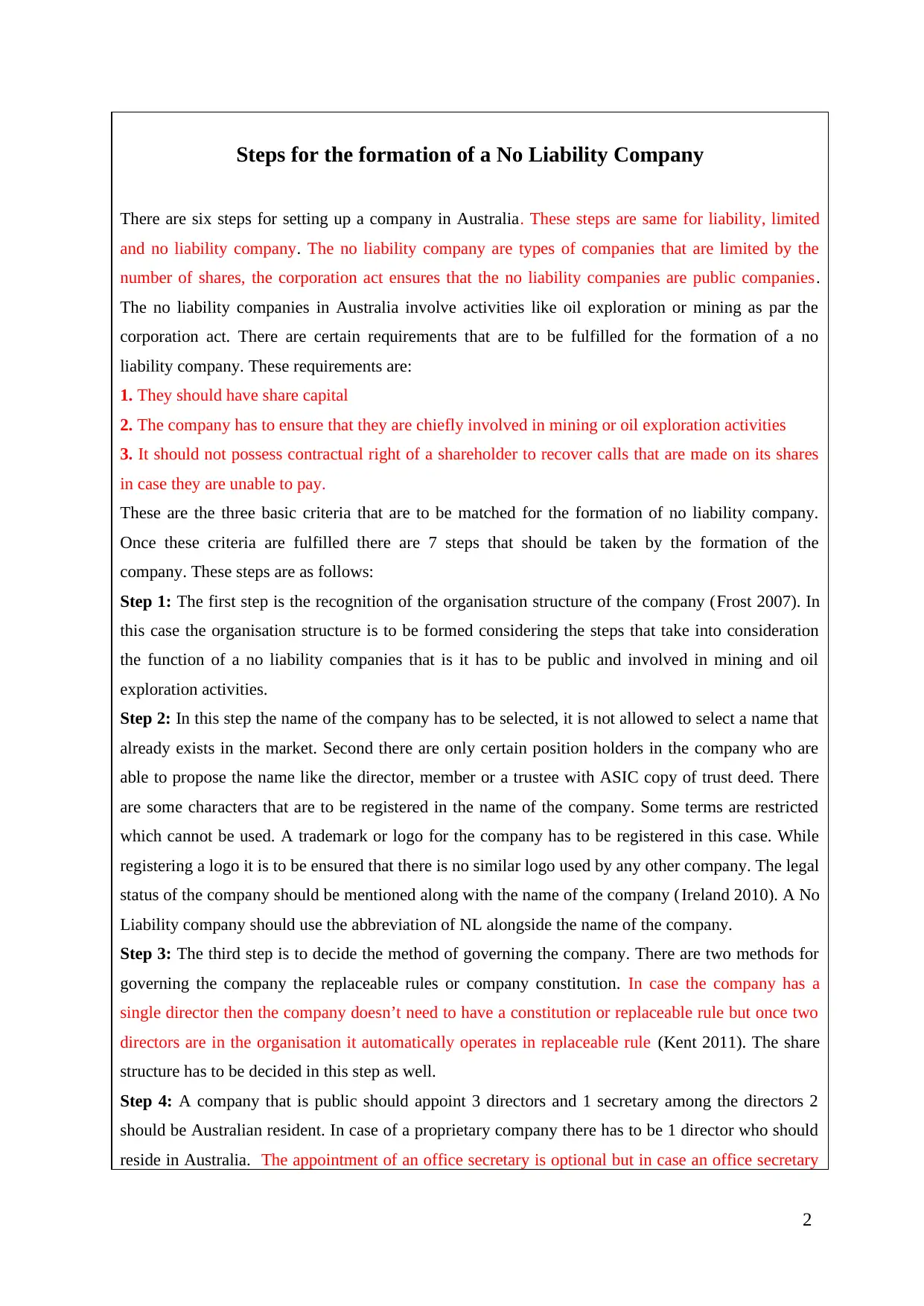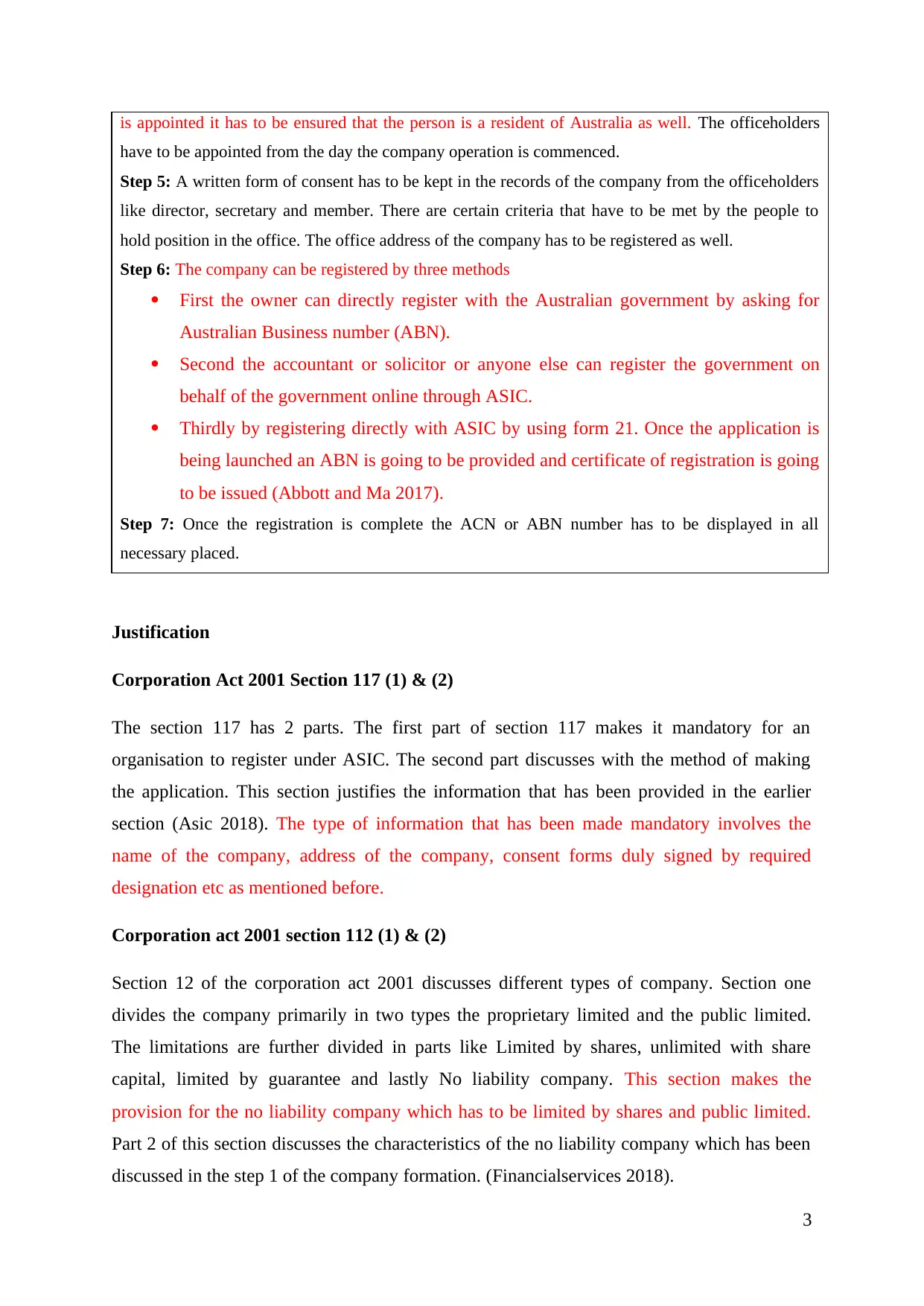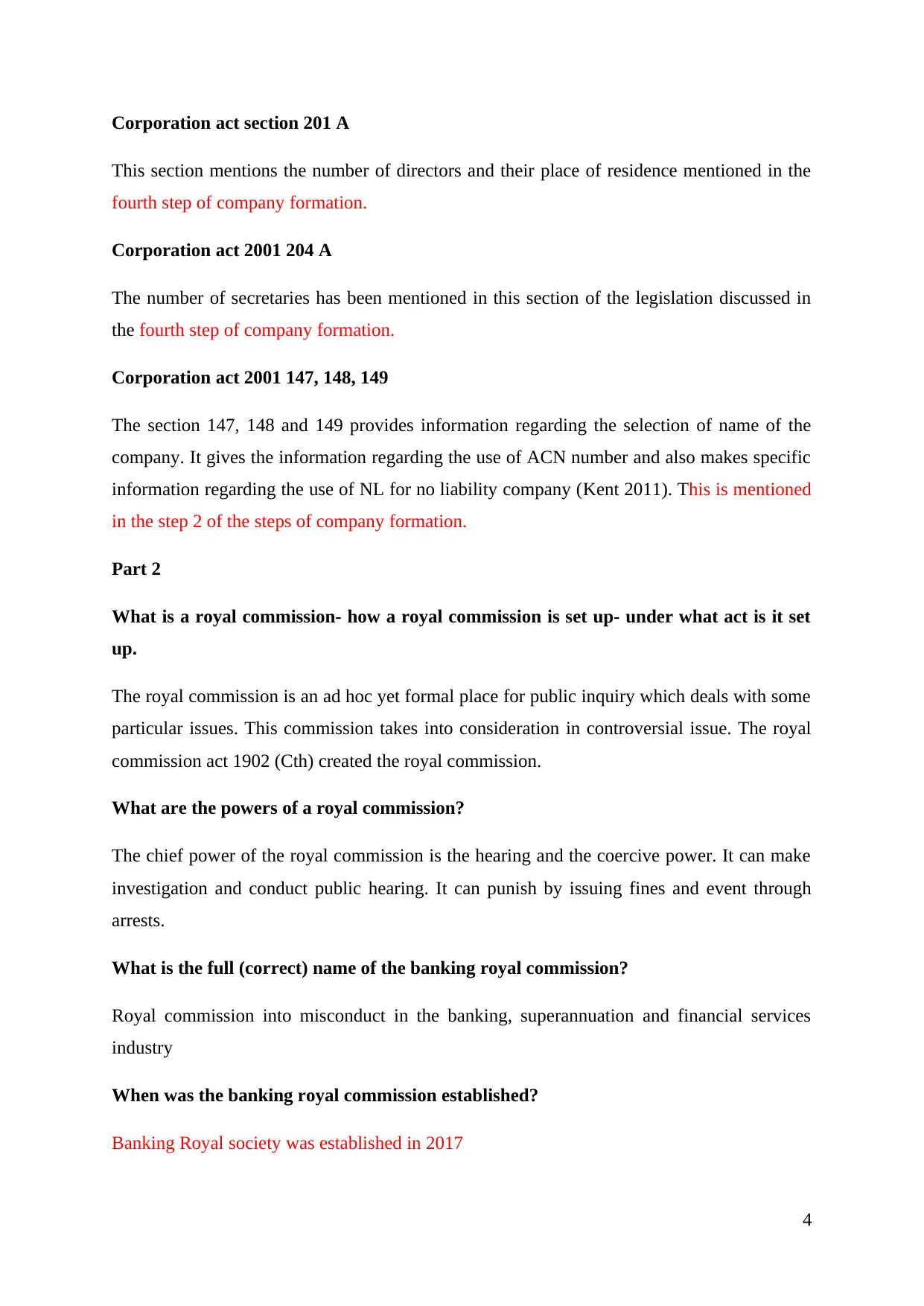Business Law 1 Assignment: Steps for Forming No Liability Companies
VerifiedAdded on 2023/06/05
|6
|1526
|485
Report
AI Summary
This report details the formation process for no liability companies in Australia, outlining seven key steps. It begins with the recognition of the company's structure, emphasizing its public nature and involvement in mining or oil exploration. Subsequent steps include selecting a unique company name, deciding on governance methods (replaceable rules or constitution), appointing directors and a secretary, obtaining written consent from officeholders, registering the company through various methods (directly with the government, through an accountant/solicitor, or using a specific form), and displaying the ACN or ABN. The report also provides justification for each step, referencing relevant sections of the Corporation Act 2001, including sections 117, 112, 201A, 204A, 147, 148, and 149. Additionally, the report briefly describes the Royal Commission, its powers, and the banking royal commission's details.
1 out of 6












![[object Object]](/_next/static/media/star-bottom.7253800d.svg)